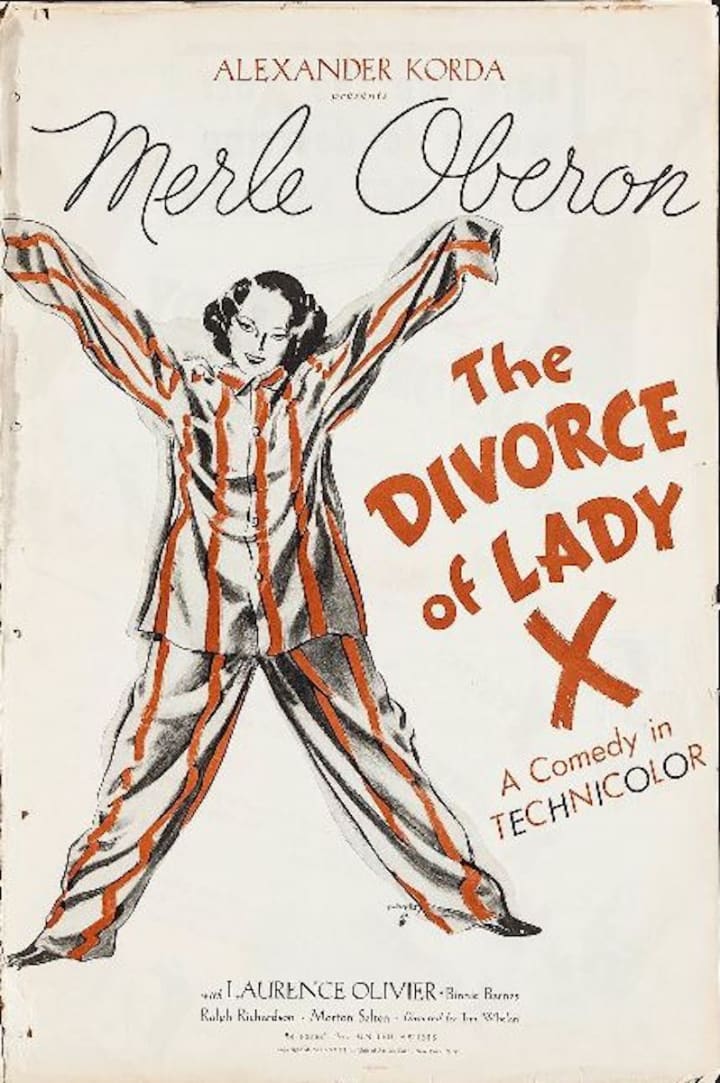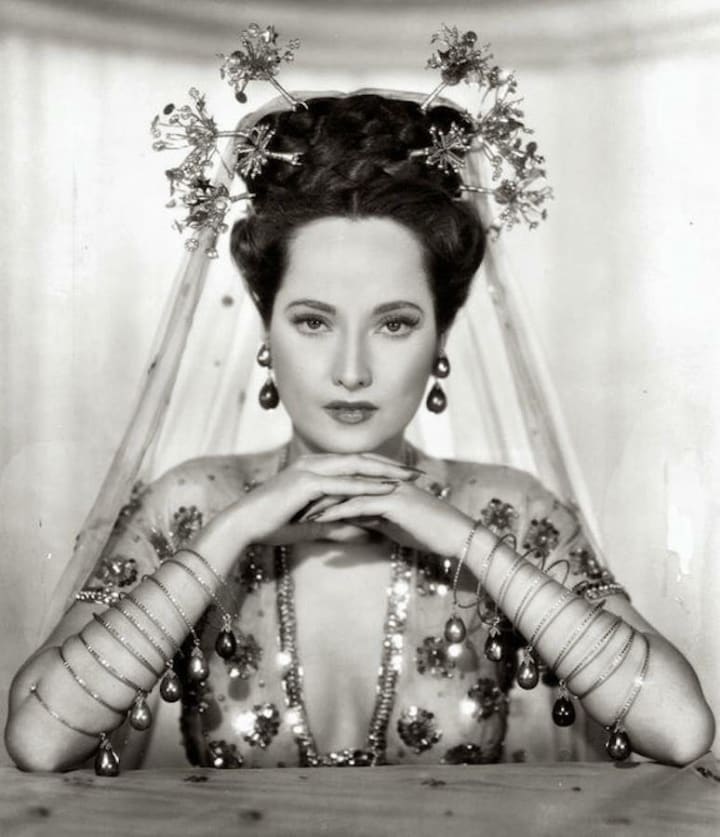Passing for White: Skin Bleaching Led to Cosmetic Poisoning
Technicolor exhibited almost every hue but certain skin shades were verboten in old Hollywood.

Laurence Olivier and a black fog descend on London. Traffic teams, neon signs glimmer, silhouettes deepen and all turn a darker shade of grey in the depths of night. Olivier is forced to hole up in a hotel due to the weather.
Suddenly, as he enters the lobby, it’s like Dorothy opening the door onto Oz: brilliant colour, divine light, another world: not the land over the rainbow but the rainbow itself.

It was 1938 and rare for a comedy to get the Technicolor treatment, costly colour being reserved for musicals and period pieces. But Alexander Korda was producing "The Divorce of Lady X" and he was in love with its leading lady, Merle Oberon.

The credits list a "Technicolor Photographic Advisor" and a "Technicolor Colour Director". Korda also enlisted award-winning cinematographer Harry Stradling Sr. And the Art Director’s credit reads: "Settings Designed in Colour by Lazare Meerson". It looks as if Mr. Meerson took his palette from the candy store. It's a visual delight.
Merle Oberon makes her entrance waving a two-tone blue, feather fan. It accessorizes her grand wedding cake of a gown, all milky froth and cornflower bows. The dress is as white as the actress appears to be. But Oberon is concealing a secret beneath it and beneath her makeup, a secret about her origin and race that, if revealed, could destroy her career. And she will do anything to keep it, including applying toxic skin bleaching creams that will have lasting detrimental effects on her health.

In the movie, Merle's character is attending a costume ball at the hotel and now she can’t go home because of the fog. But all the rooms are booked! So she has to talk Olivier, a complete stranger to her, into letting her stay in his lavish and colourful suite. There’s romance and mistaken identities and pink striped pajamas.

It’s a romp and a romcom but mostly it’s a colour extravaganza: violet, peacock, bubble gum, lavender, plum, dusty rose - "The Divorce of Lady X" is one huge crystal bowl of assorted bonbons.
Vibrant pastels play off jewel tones as energetically as Olivier plays off Oberon. The following year the two would pair up for their most famous cinematic venture - "Wuthering Heights" - a beautiful and heartrending movie, which won Gregg Toland an Oscar for Best B&W Cinematography.

Olivier’s character in "Lady X" is a barrister. The day after he shares his suite (most chastely) with Oberon, a new client shows up wanting a divorce because his wife has apparently spent the night in a hotel room with a man. Olivier believes this man’s wife is Merle, so he has a meltdown amidst the caramel chairs and buttery picture frames in his elegantly appointed office.

So much colour! Sapphire blue carpeting, pale green seltzer bottles, silver coffee pots, cherry lips, peppermint tapestry: every colour of the rainbow and beyond - with the exception of the leading lady's true complexion.
Ralph Richardson portrays the alleged cuckold. While he downs whiskey at the club surrounded by pale aqua walls and glittering chandeliers, his wife, played by Binnie Barnes, sits at her vanity in their apartment, sheathed in lilac. Her boudoir boasts a daffodil yellow fireplace, peach lampshades, cream quilts, champagne carpets and pale banana bric-a-brac.

As Olivier converses with Oberon in a red velvet booth, his hair gleams black as midnight against a mural of sunshine yellow and dusky blue. Merle wears an ink black dress that highlights her blush pink face and creamy décolleté. Much was riding on Oberon's peaches & cream features.

Merle was rigorous about having that alabaster "Pan-Cake" applied to her flesh. Her status as a star depended on Max Factor's pale foundation, key lighting on the set, and skin bleaching. It's been reported that she suffered from cosmetic poisoning, a reaction, both internally and externally, to the mercury in her skin lightening products. (Unfortunately, mercury is still in many such current products.)
After Merle died, in 1979, her birth records were made public, as they'd never been destroyed in a fire as she'd claimed. Throughout her life, she'd maintained that she was born in Tasmania to aristocratic white parents.
In fact, she was born in Bombay to a mother who was part Sri Lankan, part Maori. This meant, though it was not known at the time, that she was the first actor of Asian descent to be nominated for an Academy Award (Best Actress for 1935's "Dark Angel"). It also meant certain ruin had it been known during her reign as a major movie star.

Towards the end of the movie, Oberon nervously flits about her parlour in a dress that rivals the hearth fire: an orange-gold gown accessorized with a wisp of a red scarf. Her jewels sparkle like emerald fire, competing with her eyes.
If only she'd been allowed to let her natural skin colour shine through. How much more we - and she - could have celebrated her radiance and talent - knowing her authentic self.
About the Creator
Marie Wilson
Harper Collins published my novel "The Gorgeous Girls". My feature film screenplay "Sideshow Bandit" has won several awards at film festivals. I have a new feature film screenplay called "A Girl Like I" and it's looking for a producer.
Reader insights
Outstanding
Excellent work. Looking forward to reading more!
Top insight
Excellent storytelling
Original narrative & well developed characters






Comments (1)
Fantastic!!!💕😊💖